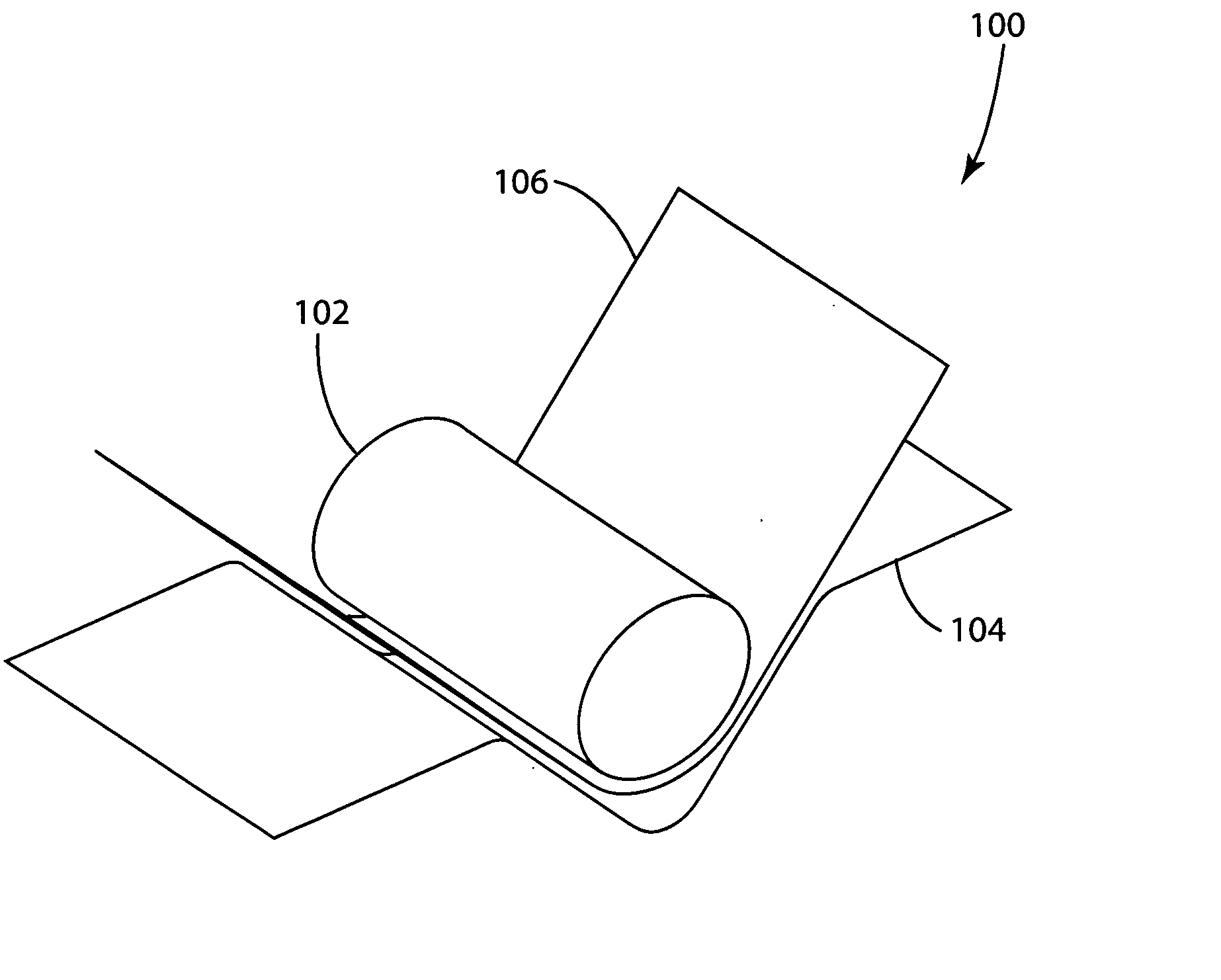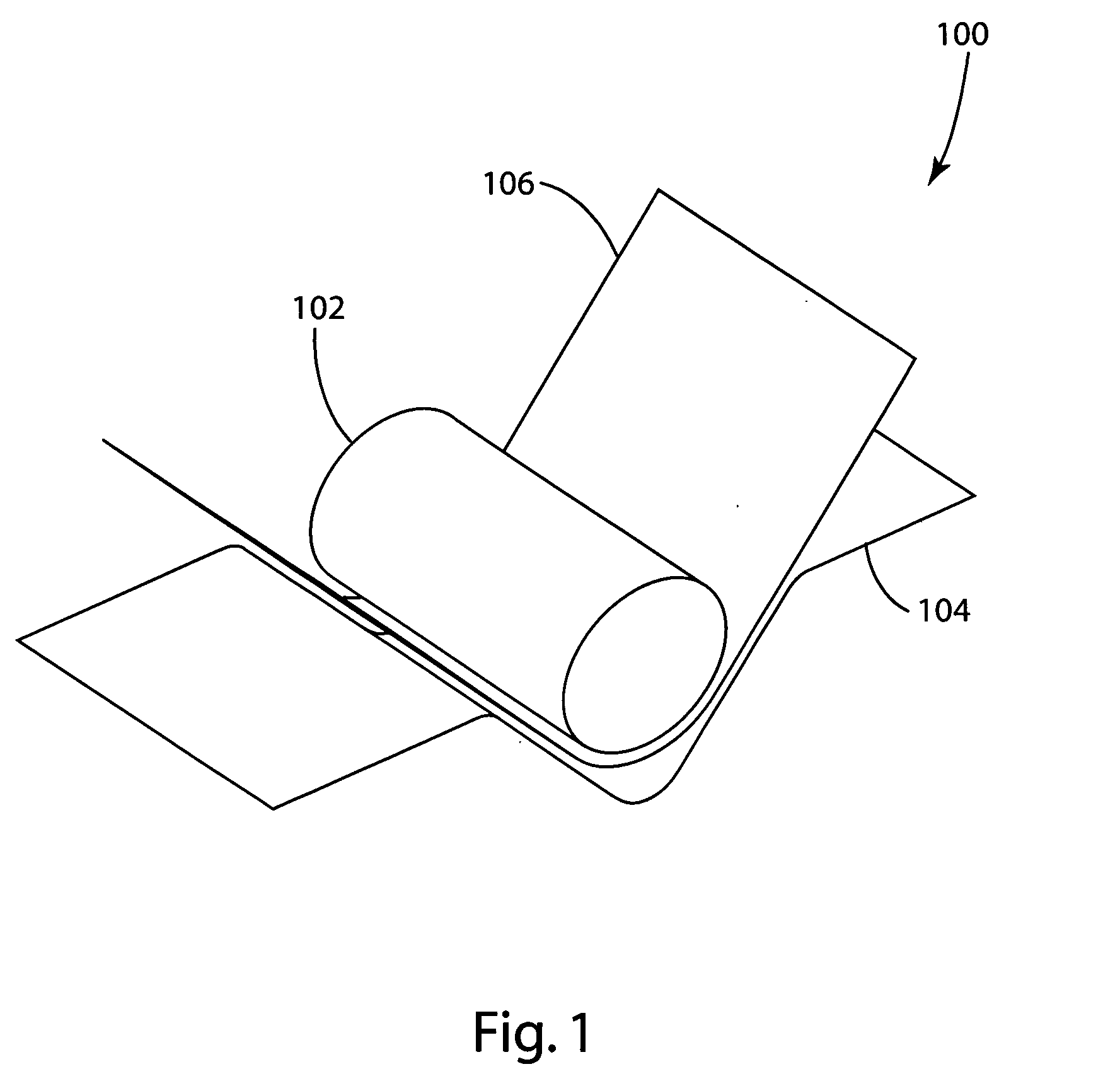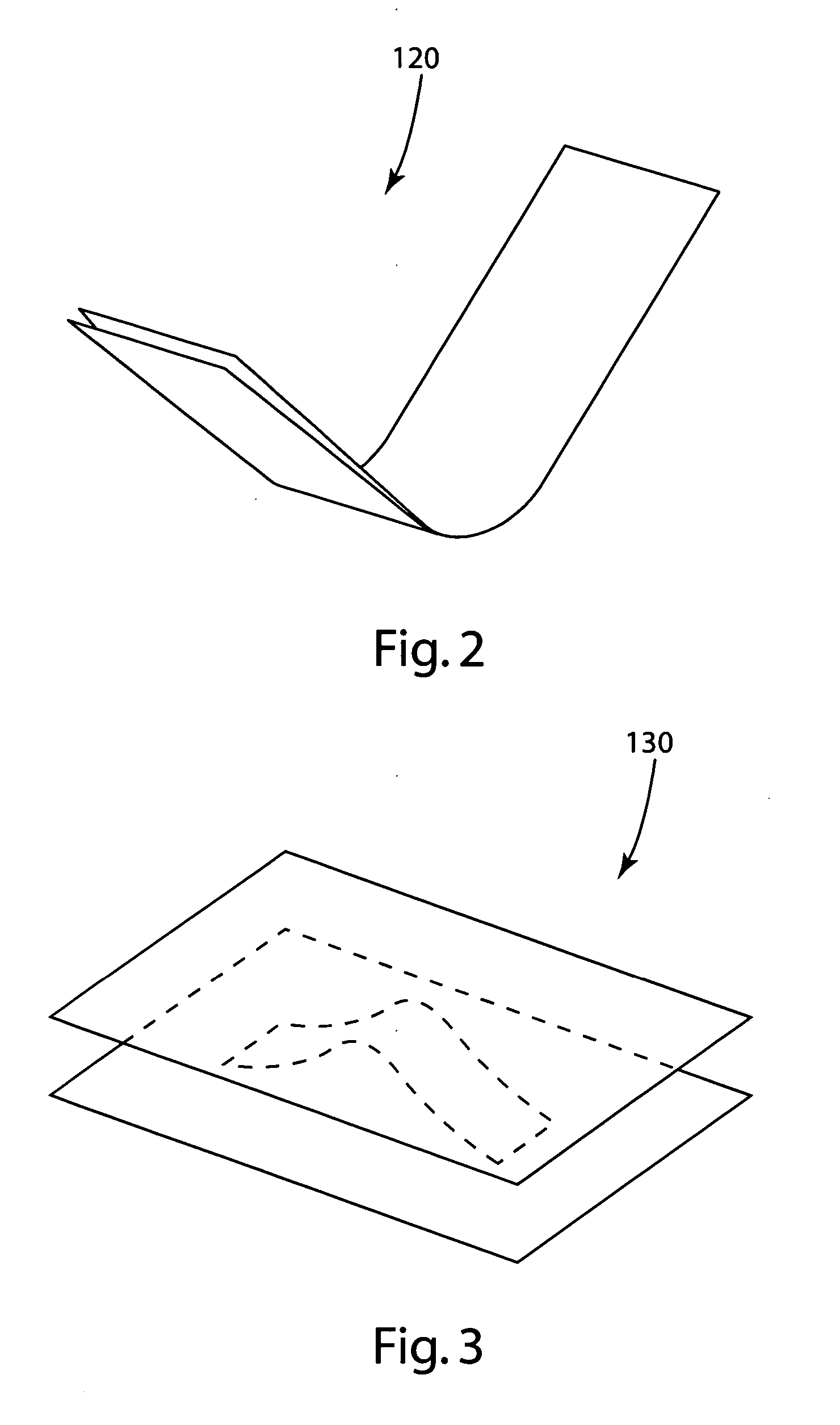Crash analysis through estimation of residual strains resulting from metal formation
a residual strain and metal technology, applied in the field of crash analysis, can solve the problems of many types of mechanical components which form mechanical components of vehicles and other apparatuses may be subject to rupture failure, many types of mechanical components are subject to fatigue failure, and it is impossible to employ testing methods for real components, so as to increase the speed of the design process
- Summary
- Abstract
- Description
- Claims
- Application Information
AI Technical Summary
Benefits of technology
Problems solved by technology
Method used
Image
Examples
Embodiment Construction
[0066] The principles of the invention are disclosed, by way of example, in a physically realized method for estimation of residual strains resulting from the forming of sheet metal. This method is described with respect to the illustrations and photographs set forth in FIGS. 1-28. As part of the description of an illustrative embodiment of the invention, results of use of the method in accordance with the invention are compared with determination of residual strains resulting from execution of metal forming simulations. As apparent from the subsequent description herein, and as applied to a first-order crash analysis, the use of estimated residual strains, rather than strains reported from several forming simulations, may increase the speed of the design process. As also set forth in subsequent paragraphs herein, test results are shown which were a physical realization of a comparison of a specimen part as formed, and an identical part which was heat treated for purposes of relievi...
PUM
 Login to View More
Login to View More Abstract
Description
Claims
Application Information
 Login to View More
Login to View More - R&D
- Intellectual Property
- Life Sciences
- Materials
- Tech Scout
- Unparalleled Data Quality
- Higher Quality Content
- 60% Fewer Hallucinations
Browse by: Latest US Patents, China's latest patents, Technical Efficacy Thesaurus, Application Domain, Technology Topic, Popular Technical Reports.
© 2025 PatSnap. All rights reserved.Legal|Privacy policy|Modern Slavery Act Transparency Statement|Sitemap|About US| Contact US: help@patsnap.com



